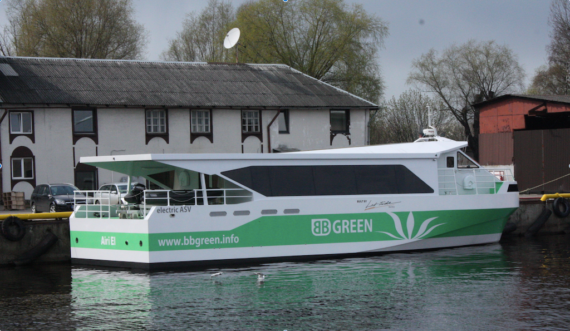An air-supported electric ferry has been launched at Latitude Yachts in Riga, Latvia. A Leclanché lithium-ion battery energy storage system is onboard and provides electricity for the vessel, which is said to be the fastest of its kind.
A fan blows air under the ship to create a cavity which allows the monohull to experience a reduction in water resistance of 40%. It can operate at speeds up to 30 knots, and uses a 200 kWh lithium–titanate battery (LTO), “As the leading manufacturer of lithium-ion battery systems in Europe, Leclanché is proud to have contributed to this very innovative project as the integrated battery system supplier,†said Antti Väyrynen, vice president of Leclanché.
The vessel is called BB Green and is being used for demonstration purposes. Reportedly, it can be charged in 15-20 minutes with fast charging. It can maintain high speeds for 30 minutes within a range of 14 nautical miles, and the vessel has a 70 passenger capacity. After spending some time in Riga, it will travel to Stockholm, Gothenburg, and Oslo.
Reducing, or even eliminating marine air pollution is important because it can harm marine wildlife. For example, this ferry has nothing to do with whale-watching, but there has been some research conducted which showed that getting close to whales in boats that have internal combustion engines which produce air pollution can beproblematic, “Cara Lachmuth and colleagues’ 2011 study investigated vessel behavior and emission levels in the presence of southern resident killer whales and found that exhaust emissions have the potential to cause adverse health effects. Whales don’t have sinuses to filter air the way terrestrial mammals do and they have no sense of smell to help them detect, and hence possibly avoid, engine exhaust. They also spend much of their time diving, which increases pressure in their lungs and causes air pollutants to enter their blood more rapidly than for non-diving animals.â€
This ferry probably won’t be near wildlife, but if it was, it would not be pumping pollutants over the surface of the water where marine animals might breathe them. Such a vessel would also not be polluting air breathed by humans, in the manner of older vessels—especially the ones that only use diesel fuel.
Source: Cleantechnica


